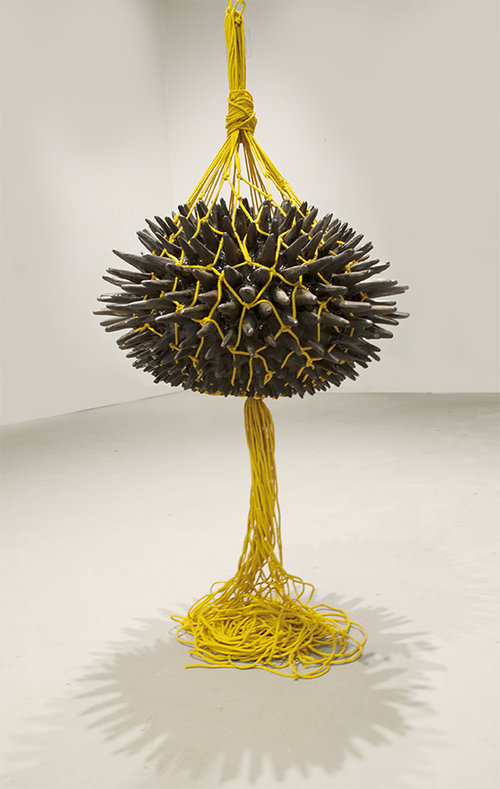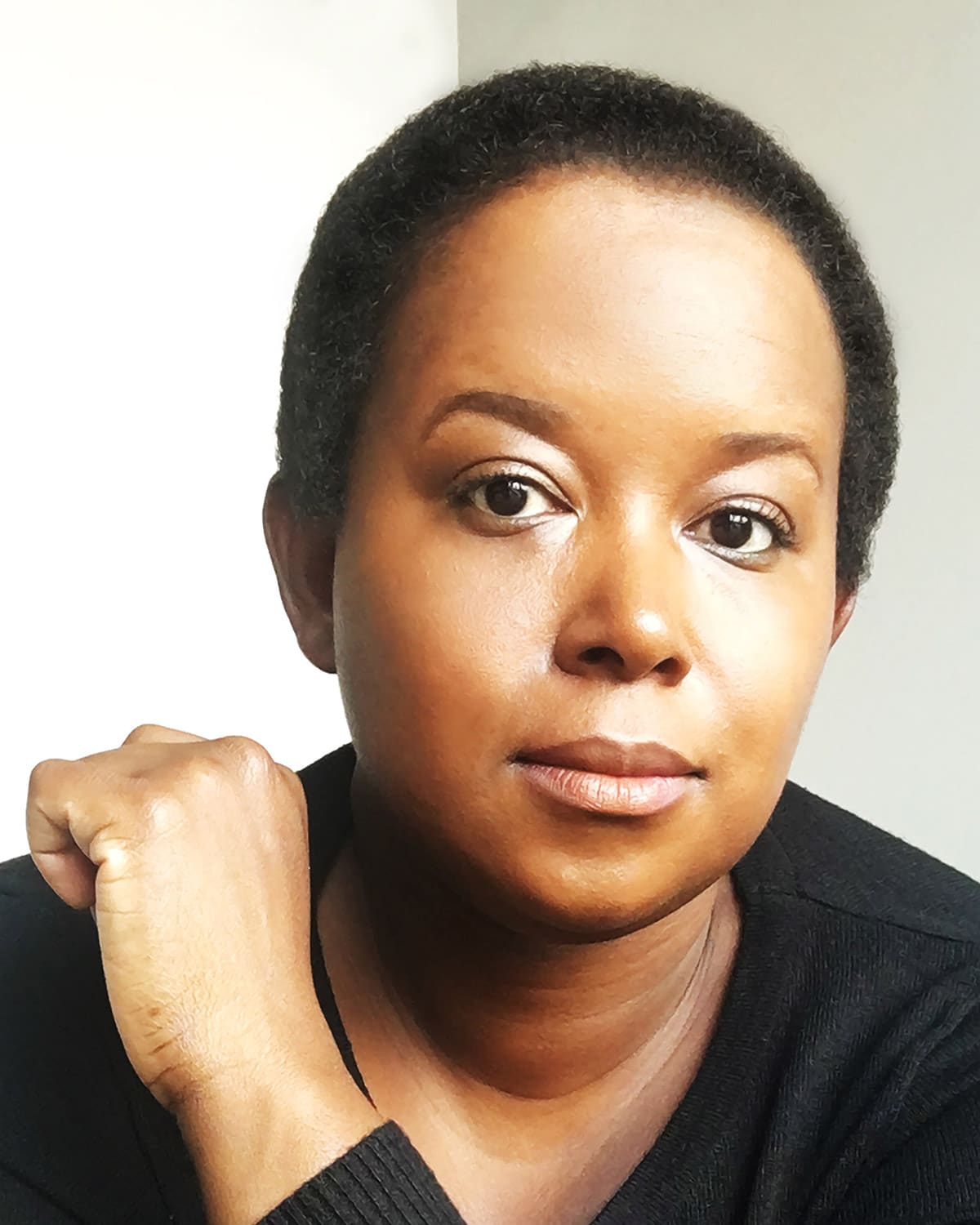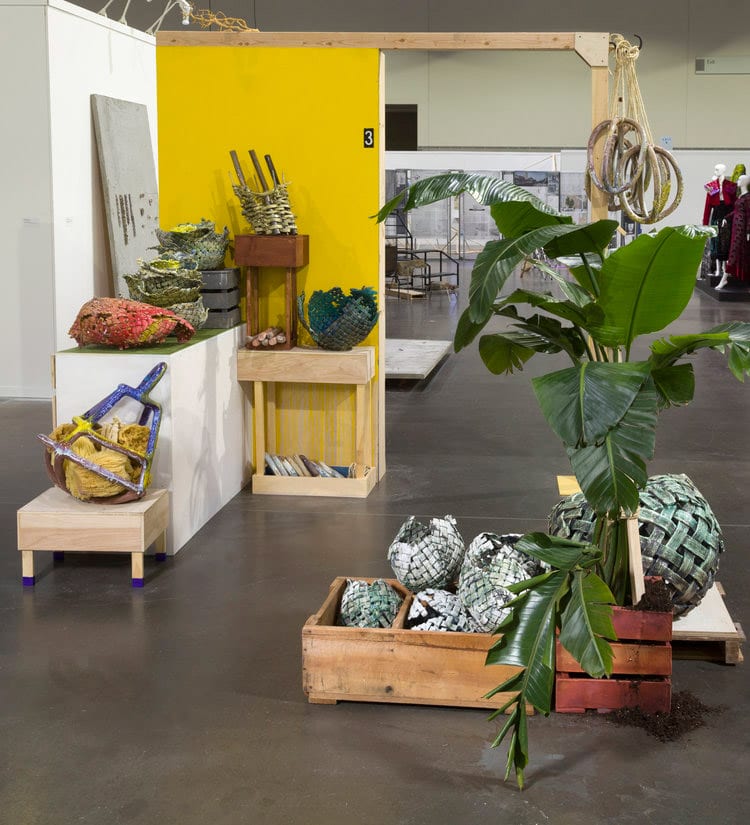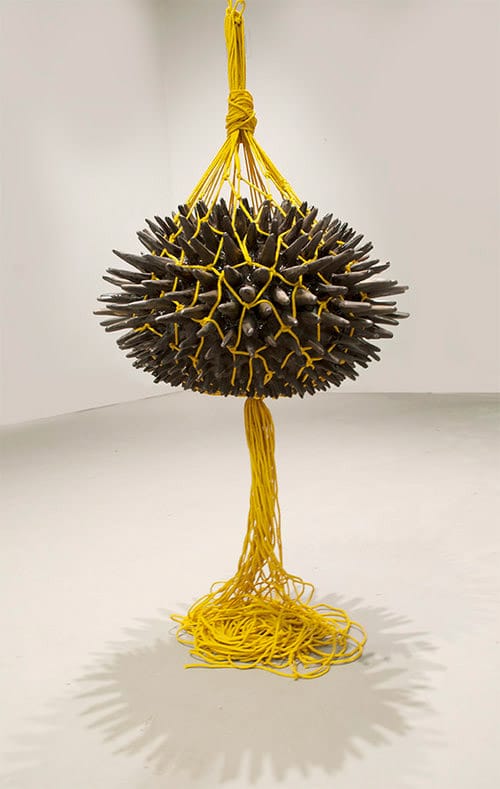
By Natalie Willis
Continuing on last week’s interview, the discussion builds on the rest of the body of work that Anina Major is producing for “We Suffer To Remain”, an exhibition featuring “The Slave’s Lament” (2015) by Scottish artist Graham Fagen alongside three Bahamian artists, Sonia Farmer and John Beadle included. Major’s work and much of the exhibition deals with the legacies of slavery as embodied by us as post-colonial subjects. This week she speaks to that embodiment, to pain, and to what it means to inhabit a Black feminine body in relation to the ideas brought up by this exhibition as well as recent events in the country.

Portrait of Anina Major. All images courtesy the artist.
Natalie Willis: In looking at “Bessie’s Backbone” (2018), the ceramic installation you’re producing for “We Suffer To Remain”, speak to me a bit more about the strength that this represents for you.
Anina Major: I spoke of how this work is a sort of compounding of years of abuse. That, in its way, is where it becomes the strength. You gain strength from this action, and it forms a kind of foundation when you look at the way that the discs of “Bessie’s Backbone” stack on top of each other, building up the pillar of strength. This idea that it’s made of stacking components, it speaks to repetition, and in this case the recurrence of abuse and violence historical and contemporary – and how out of that, we build something substantial that can withstand the force and hold weight.
NW: Even more fitting when it’s also tempered by fire as part of the process of working with ceramics.
AM: Yes, and this strength I’m speaking to, I think that can be said physically for us but also emotionally as a people. This work is one way in particular that I reference the body and movement, in the way it is an attempt to solidify and make tangible a specific act. In presenting I want to illustrate a characteristic of us that continues throughout generation to generation. It’s not uncommon to hear that “we’re a strong people”, we know why it’s not unusual to hear that. To survive repeated abuse, physically psychologically and emotionally, requires a level of strength that I believe inevitably passes on to future generations. Whether or not they use that strength is a different story, or whether they employ that strength, but I think it is undoubtedly passed on.

“In the Marketplace” (2017), Anina Major, installation, dimensions variable.
NW: I know that this idea and this embodiment is something you explore in your practice, but does Fagen’s work, “The Slave’s Lament” have you thinking about the inheritance of strength in a different way?
AM: Something about it conjures up a physical reaction for me. So if I’m responding to his work, I can’t help but have physical responses or connections to the physical body in the work. To make work that has a conversation with it, is inherent to talk about the body. It just made sense to talk about the body, but I’ve used this as a way to explore other things. So in thinking about the body (the spine, the backbone) as a sign of strength, as this thing that I’ve inherited – that still somehow manages to refer back to pain that my ancestors might’ve gone through, and my visceral reaction to his work along with my practice and recent interpretations having to deal so explicitly with the body just makes sense.
NW: And in having such a physical response to the work and dealing with this idea of strength and abuse, how do you begin to think about the concept of pain in relation to this trauma of slavery and displacement?
AM: I made the “Wisdom Teeth” (2017) sculpture before seeing Graham’s piece, and I created that piece as a way of thinking about pain, but I was thinking about ideas of experience also, or of an experience that anyone can relate to. The act of removing a tooth is a painful experience that most people can understand. We can never recreate for a contemporary person in most societies what exactly slavery must have been like, but I what I can do is reference something that is an experience that we all have had and use that as a starting point. I think pulling of teeth is one of them, and, again, it’s another way of embodying this pain and history and thinking about the body. It’s the idea that you remove something, but you still have the memory of that pain. The tooth is no longer there, but you still have the memory of that pain or experience. The “Wisdom Teeth” is like taking those pieces painfully removed from you and treasuring them. What would it be to keep them? You can’t keep them in your mouth of course. But what would it mean to keep them as objects? In this particular case, the fact that these were made from an object that I brought from home was my way of keeping those objects and having them travel with me wherever I go. And that travel and movement makes them act as a reminder of the important things I wanted to remember, things we can’t forget. When I think about knowledge, to me that is wisdom – a carrying forth of what you’ve learned to new experiences. That’s how I view the wisdom tooth pieces.

“Sunburst” (2016), Anina Major, ceramic installation, dimensions variable.
NW: So we’re talking about painful memories and things being removed, which also brings us to another set of work for this show dealing with scars…
AM: The other two pieces kind of work the same sort of way as well, in that “The Scars of Three Ships”, a wall-based installation, is looking to what we’re not talking about. It’s about something there, but it’s still on the surface, scars have a way of just remaining on the surface but containing that memory of pain. These scars, if I keep referring to them as scars, are marks that regardless of whether you acknowledge them, they still exist. They exist for us all. And we know whose three ships, in particular, those were. There needs to be more works made in place to counter the current narrative of that history of those three ships. And so that’s what that piece is coming to be and mean.
NW: Now, tell me about the work we haven’t discussed. In speaking of pain, trauma, bodies and the personal, this feels like the one that sums it all up.
AM: The last piece, I’m still working on conceptually, is “To Have and Not To Own”. In light of recent political events at home and information coming to the surface, I can’t help but realise parallels between ownership of the body historically and today. I’m a woman of colour, and when I think about the body, there are still places where I feel like we’re not entirely fleshed out yet. This idea that a husband can own my body is what I’m thinking through with that piece in this sense. I don’t even understand why this is a question today. I can’t help but link this back to slavery. How do you not? What’s fundamentally being said is that my body is not my own, and how is that any different historically from the men that captured me and brought me to be here when we look to ancestry and the slave trade and how women were treated in that era and this one? I’m working through how we still have these residual effects from that time that are still so incredibly prominent. We’re still talking about this in 2018. We are still having this discussion, and we don’t seem to see any linkage to our history with this discussion. We see none. As a woman of colour, this is what place I have to speak from.
“We Suffer To Remain” will open at the NAGB at 7 pm on Thursday, March 22nd, 2018. The NAGB will be hosting a cohort including Scottish artist Graham Fagen, and the British Council’s Caribbean Arts Manager, Annalee Davis and Director of Exhibitions, Visual Arts, Gemma Hollington, All openings are free to the public, and all discussion is welcome.